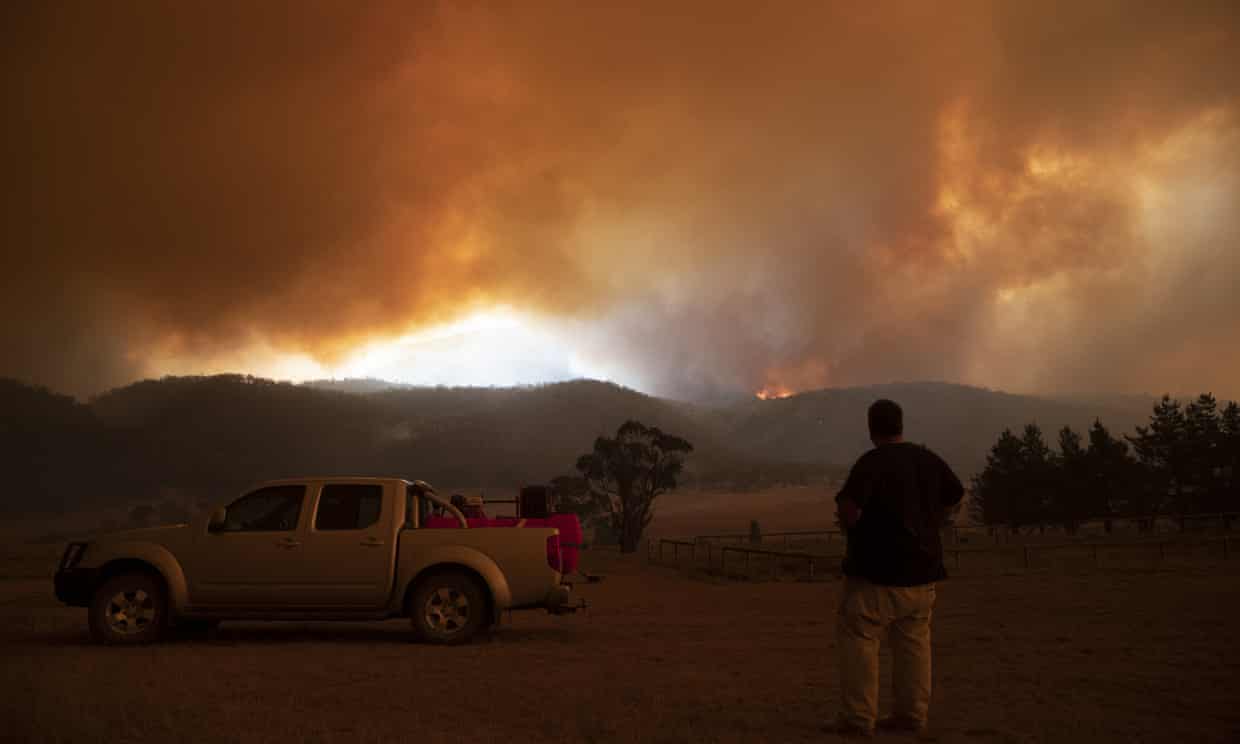
Bushfires
Australia's severe bushfire season was predicted and will be repeated, inquiry told
Forecasts that turned out to be accurate were made available to governments and fire agencies in the middle of 2019
by Calla WahlquistThe fires that caused 33 deaths, destroyed more than 3,000 homes, and burned more than 10m hectares of bushland were accurately predicted by the Bureau of Meteorology and in line with predictions Australia’s peak scientific body laid down 30 years ago.
And according to evidence given in the first day of public hearings in the royal commission into national natural disaster arrangements on Monday, fires of that scale will occur with greater frequency as the climate continues to heat.
“This isn’t a one-off event that we’re looking at here,” the Bureau of Meteorology’s head of climate monitoring, Dr Karl Braganza, told the hearing.
“Really since the Canberra 2003 fires, every jurisdiction in Australia has seen some really significant fire events that have challenged what we do to respond to them and have really challenged what we thought fire weather looked like preceding this period.”
Climate change was the focus of the hearing, despite prime minister Scott Morrison saying in February that the inquiry would focus on mitigation and adaptation, including to “changing climatic conditions” but would not consider the climate emergency.
Braganza said both climate and weather forecasts were able to accurately predict the severity of a fire season, and that forecast was made available to fire agencies and governments in the middle of the year.
Asked by the chief commissioner, retired Air Chief Marshal Mark Binskin, whether the forecasts in mid-2019 accurately predicted the conditions seen that summer, Braganza said yes.
“Things really played out the way our forecast models, both in climate and weather, suggested they would,” he said.
Dr Helen Cleugh, a senior principal research scientist with the CSIRO, said that the frequency of extreme El Niño, La Niña and Indian Ocean dipole events under global heating meant Australia would experience more extreme weather events in future, and that those events would not be able to be mitigated, or their severity predicted, by looking at what had occurred in the past.
“Climate change means that the past is no longer a guide to future climate-related impacts and risks,” she said.
Cleugh said modelling conducted by the CSIRO in 1992 was “very consistent” with the changes in climate that had occurred in the 28 years since.
“The key point I want to make here is that these climate projections are credible and salient, and most importantly they are still current in 2020,” she said.
Braganza said the bushfire season in New South Wales and parts of Victoria now began in August, three months earlier than in the 1950s. The fire season in Victoria has also extended one month further in autumn.
Dr Ryan Crompton, a specialist in climate and natural hazards modelling and general manager of Risk Frontiers, told the hearing that better urban planning could play a role in mitigating property loss, even in a heating climate. He said that 38% of houses lost on the NSW south coast over summer were within one metre of bushland, and 80% were within 100m.
Crompton said the 2019-20 summer was “comparable to the most damaging seasons” for property loss recorded since 1925. NSW lost 2.5 times more houses than in the next-worst fire season.
Binskin and fellow commissioners, Dr Annabelle Bennett, a former federal court judge and chancellor of Bond University, and Prof Andrew Macintosh, an environmental law and policy expert from the Australian National University, will hear from 50 witnesses over the next two weeks.
The inquiry has received more than 1,700 public submissions and 16,589 documents, totalling more than 200,000 pages. A further 159 notices to produce information or documents have not yet been answered, including from state and territory governments.
Senior counsel assisting, Dominique Hogan-Doran SC, said the delay in producing documents “has influenced our choice and sequencing of topics for public hearing.”
The inquiry is due to produce its final report and recommendations for managing the upcoming bushfire season by the end of August.